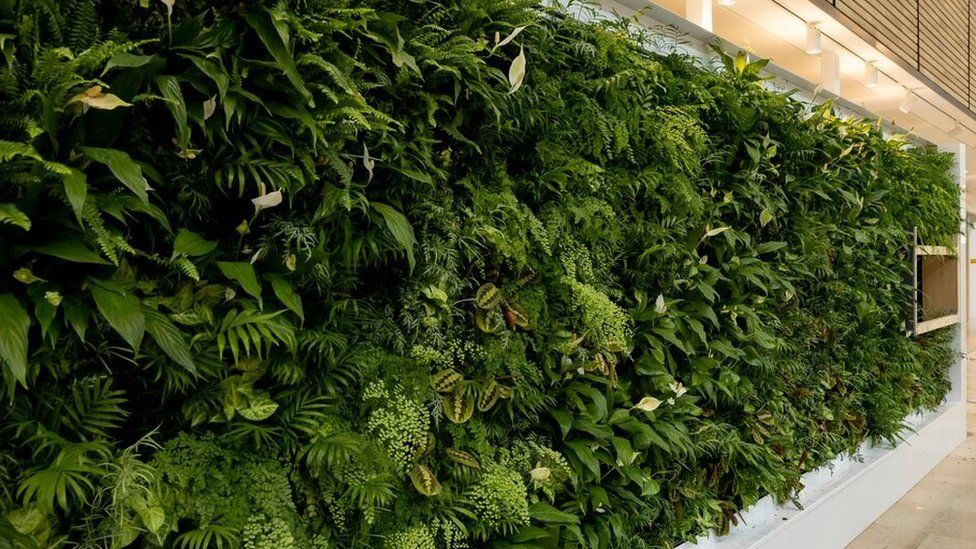
Can houseplants purify the air in your home?
- Published By Jane Njeri For The Statesman Digital
- 2 years ago
Most people don't realise just how many pollutants are swirling around indoors, where they typically spend most of their time.
For example, many of the products we use for cleaning and freshening our homes, schools and workplaces are adding invisible toxins to the air.
"The smell of fresh is not a smell," says Anne Hicks, a paediatric pulmonary specialist at the University of Alberta.
"If you can smell it, there's a chemical in the air that's getting up your nose. So all of that is air pollution, whether it smells good or bad," she says.
"Indoor air pollution is huge, and it's a relatively unknown frontier, because even my next-door neighbour's house has a different air pollution fingerprint than my house would have," Dr Hicks says.
Indoor air pollution is highly complex, little regulated, and often beyond individual control. For instance, road traffic produces nitrogen dioxide, while moisture and structural issues in buildings can lead to mould.
Air purifiers with high efficiency particulate air (HEPA) filters can help. But the initial cost plus the energy to run them can be out of reach for some households.
This is one reason that it's so appealing to think of potted plants as passively, and inexpensively, cleaning the air. Essentially, plant leaves take in carbon dioxide and other pollutants, which are then used in various plant processes or broken down.
Especially important here are the community of micro-organisms and the growing medium (such as soil or compost), which in many studies do more to absorb pollutants than the plant itself.
An influential NASA study from 1989 found that indoor plants could remove formaldehyde and other volatile organic compounds (VOCs) from the air. But the study was unrealistic for real-world conditions.
In essence, an indoor forest would be required to meaningfully reduce VOCs in a home.
"You need an awful lot of plants in very well-lit space to make any measurable impact on the removal of VOCs and many other gases," says Tijana Blanusa, the principal horticultural scientist for the Royal Horticultural Society, as well as a researcher at the University of Reading.
Similarly, for carbon dioxide, "you need very large numbers of plants to actually have measurable effects at room scale."
So is scaling-up the answer?

Some researchers, including Tijana Blanusa, have moved on from individual potted plants to active (living) green walls, which can concentrate more plants and also filter air more efficiently due to the way air can be moved through them.
She explains that with active green walls: "Air from the room is being pushed or encouraged through the root systems over and above the level which would happen naturally if you just had the plants sitting in a pot."
However, such green walls are expensive to install and maintain.
So people continue to experiment with plants.
When building consultancy Cundall moved into their current London office in 2015, they filled one of the meeting rooms, known as the Green Lab, with plants.
The aim was to monitor and record the plants' impact on indoor air quality. But it was challenging to look after them all.
It also became clear that the plants weren't having the same effect on air quality as the mechanical ventilation and air purification systems.
The room now has a few large plants in the corners, as well as a small rectangle of preserved reindeer moss on the wall. The spongy moss is lovely to touch and look at, but has no ability to absorb pollutants.

When clients ask about plants for improving air quality, Kavita Kumari, the associate director of Cundall's London office, advises them on plants' advantages and limitations.
She recommends plants that are relatively low-maintenance while being able to reduce some VOCs and produce oxygen, though she acknowledges that these effects are modest.
One such plant is the snake plant (a common houseplant also sometimes known by the sexist moniker mother-in-law's tongue, due to its sharp shape).
Ms Kumari says that while most plants take in carbon dioxide and release oxygen during the day, this plant is able to do so at night as well.
She says that simply opening a window to allow the outflow of indoor air pollutants doesn't work in highly built-up areas, where outdoor pollutants can enter at the same time.
Share on
Tags
SHARE YOUR COMMENT
MORE STORIES FOR YOU
Trending Stories
DJ Mo’s former illicit lo...
- Published By Jane
- January 15, 2024
Mapenzi! Zari and Tanasha...
- Published By Jane
- October 24, 2023
Zuchu Speaks on Diamond P...
- Published By Jane
- October 12, 2023
Hio Ni Upumbavu Wasituche...
- Published By Jane
- November 8, 2023
RECOMMENDED FOR YOU
Your Lungs Hold Secrets A...
- Published By The
- September 11, 2025
Better Sleep?: See The Li...
- Published By The
- September 11, 2025
What to Know About iPhone...
- Published By The
- September 11, 2025
From Teacher to Mwalimu N...
- Published By The
- September 11, 2025
Latest Stories
National Assembly Adjourn...
- Published By The
- October 15, 2025
Revealed: What killed Rai...
- Published By The
- October 15, 2025
Raila's Profile: Who Was...
- Published By The
- October 15, 2025
ODM Leader Raila Odinga D...
- Published By The
- October 15, 2025



